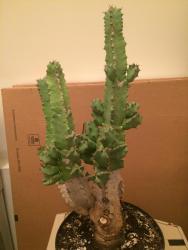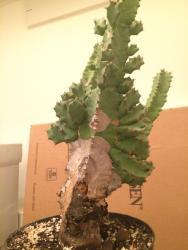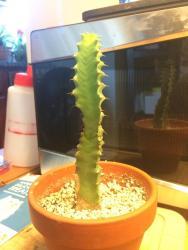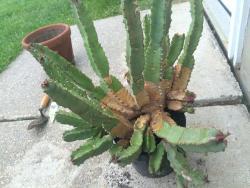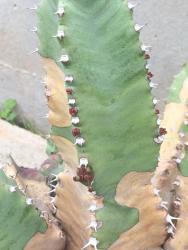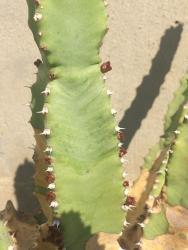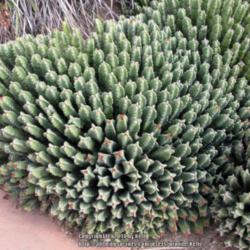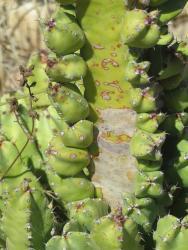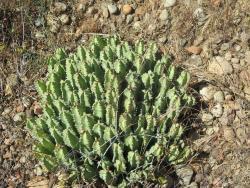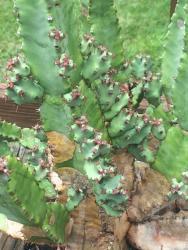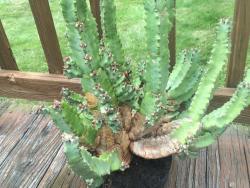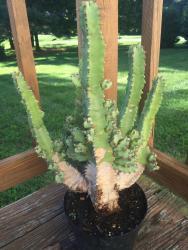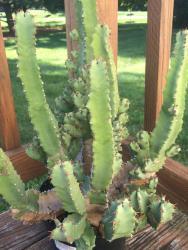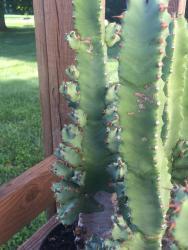I think it's kinda' funny how there is so much knowledge out there about some of the most mundane things. Even funnier, the most knowledgeable response will probably come from some tax lawyer with a hobby, and not a botanist or landscaper. Thank you for all your help!
This same plant is giving me trouble again. Every month or so, one portion ( a branch? A frond? What do u call them?) of my plant goes soft and rots. Therefore I need to cut it off. 85% of the plant is healthy, but I repeatedly need to cut off sections. So, I cut this plant down to a skeleton. It looks ridiculous but it's coming inside for the winter, so who cares?The rotting part went below the soil, so I took the plant out of the soil to make sure there were no soft spots on the center (or trunk?) of the plant. It was colored tan but very firm. I re-potted it in a new pot and high-drainage soil.
I live near Baltimore, Maryland. Summers are hot and humid, and winters are cold as hell! Last year I randomly placed this plant in my garage for the winter. I never thought it would survive! I have 2 cats that love to chew on plants and knock them over, so I couldn't bring it inside. I watered it once every 3-4 weeks, and it was fine. Again, my garage is the only option for this plant during the winter. Any tips to help it survive? The garage is not heated, but stays about 20-30 degrees warmer than outside. Should I give it a blanket? Water it with warm water?
Every year I get suckered into buying orchids from the grocery store, or Home Depot. I've killed almost every one. Now that I've finally been able to keep an orchid alive for multiple seasons, I need a new challenge. Keeping this Moroccan "spawn of Satan " alive is it. My goal is to have it looking green and lush by next summer. Here are pics with one of the clipping growing like crazy. Thanks!
